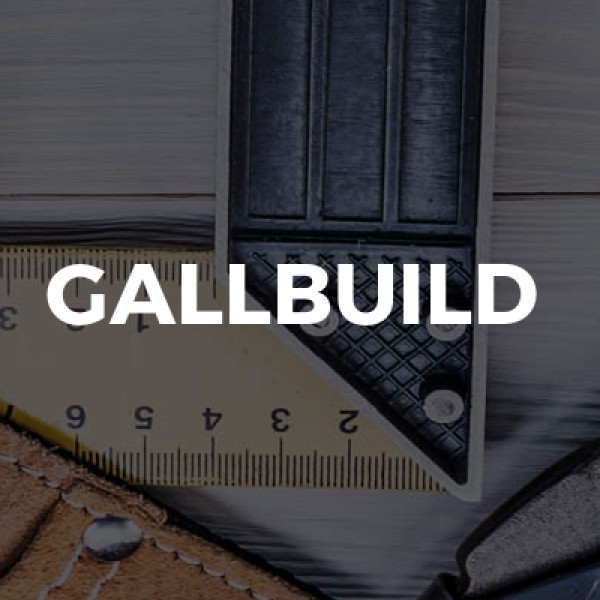Loft Conversions in Newhaven
FT Carpentry, based in the charming locale of Mount Pleasant, is your go-to expert for all things building and carpentry... read more »
Welcome to T.LE Contracting Ltd, your trusted partner for all building services in East Sussex. Based in Preston, we proudly serve the Ea... read more »
Welcome to Gallbuild, your trusted partner for all building needs in Upper Horsebridge and throughout East Sussex. As a leading name in t... read more »
LJR Building Services is a premier choice for all your construction and renovation needs in Fishersgate... read more »
Ashwell Carpentry Joinery LTD is the premier choice for home improvement services in Upper Horsebridge... read more »
Welcome to Xtenditall Ltd, your trusted builders and... read more »
Good Wood Solutions Ltd is your go-t... read more »
Welcome to Brighton 1 Builders & Property Services, y... read more »
Welcome to Lofthouse, your trusted partner for all bu... read more »
Welcome to Southern Specialist Treatments Ltd, your t... read more »
Welcome to South Coast Home Improvements, your go-to... read more »
Welcome to Chris’s Roofing and Building Service, yo... read more »
STF Start To Finish Sussex Ltd is yo... read more »
Welcome to Elite Carpentry, your go-to experts for al... read more »
Welcome to Little Building Constructions, your truste... read more »
D E Carpentry And Construction is a... read more »
Welcome to JPKemp Plasterers, your premier choice for... read more »
S.Morgan Building & Carpentry is a r... read more »
Welcome to Alfredas Gudeikis, your premier choice for... read more »
Search Loft Conversions in places nearby
Understanding Loft Conversions in Newhaven
Loft conversions in Newhaven are becoming increasingly popular as homeowners seek to maximise their living space without the hassle of moving. With the town's charming coastal setting and a growing community, it's no wonder residents are looking to enhance their homes. This article will guide you through the ins and outs of loft conversions, providing you with the knowledge to make informed decisions.
What is a Loft Conversion?
A loft conversion is the process of transforming an unused attic space into a functional room. This could be anything from an extra bedroom, a home office, or even a playroom for the kids. The possibilities are endless, and with the right planning, a loft conversion can significantly increase the value of your home.
Benefits of Loft Conversions
There are numerous advantages to converting your loft. Firstly, it adds valuable space to your home without encroaching on your garden or outdoor areas. Secondly, it can increase the property's market value, making it a wise investment. Additionally, a loft conversion can enhance the aesthetic appeal of your home, providing a unique and personal touch.
Increased Living Space
One of the most significant benefits is the additional living space. Whether you need an extra bedroom for a growing family or a quiet office space, a loft conversion can provide the solution.
Boost in Property Value
Investing in a loft conversion can increase your property's value by up to 20%. This makes it an attractive option for homeowners looking to sell in the future.
Customisable Design
Loft conversions offer a blank canvas for creativity. You can tailor the space to suit your needs and style, making it a truly personalised area of your home.
Types of Loft Conversions
There are several types of loft conversions, each with its own set of benefits and considerations. The choice largely depends on your budget, the type of house you have, and your personal preferences.
Dormer Loft Conversion
A dormer loft conversion is one of the most common types. It involves extending the existing roof to create additional headroom and floor space. This type is ideal for those looking to maximise space and light.
Mansard Loft Conversion
Mansard conversions are typically more extensive and involve altering the roof structure. They provide a significant amount of additional space and are often used in terraced houses.
Hip to Gable Loft Conversion
This type of conversion is suitable for homes with a hipped roof. It involves straightening the sloped side of the roof to create a vertical wall, thus increasing the interior space.
Velux Loft Conversion
Velux conversions are the least invasive and do not require any changes to the roof structure. They involve installing Velux windows to bring in natural light, making them a cost-effective option.
Planning Permission and Building Regulations
Before embarking on a loft conversion, it's crucial to understand the planning permission and building regulations involved. In many cases, loft conversions fall under permitted development rights, meaning you won't need formal planning permission. However, there are exceptions, especially if your property is in a conservation area or is a listed building.
Permitted Development Rights
Most loft conversions in Newhaven can be carried out under permitted development rights, which allow certain building works without the need for planning permission. However, there are limits on the size and scale of the conversion.
Building Regulations
Regardless of planning permission, all loft conversions must comply with building regulations. These ensure the safety and structural integrity of the conversion, covering aspects such as fire safety, insulation, and access.
Choosing the Right Contractor
Selecting the right contractor is crucial to the success of your loft conversion. A reputable contractor will guide you through the process, ensuring that your project is completed on time and within budget.
Research and Recommendations
Start by researching local contractors and asking for recommendations from friends or family. Look for contractors with experience in loft conversions and check their credentials and reviews.
Getting Quotes
Obtain quotes from several contractors to compare prices and services. Ensure that the quotes are detailed and include all aspects of the project, from design to completion.
Contract and Timeline
Once you've chosen a contractor, ensure you have a clear contract outlining the scope of work, timeline, and payment schedule. This will help avoid any misunderstandings or disputes later on.
Cost of Loft Conversions in Newhaven
The cost of a loft conversion can vary significantly depending on the type and complexity of the project. On average, you can expect to pay between £20,000 and £50,000. Factors such as the size of the conversion, materials used, and any additional features will affect the overall cost.
Budgeting for Your Conversion
It's essential to set a realistic budget for your loft conversion. Consider all potential costs, including design fees, construction, and any unforeseen expenses.
Financing Options
If you're concerned about the cost, there are several financing options available. These include home improvement loans, remortgaging, or using savings. It's important to explore all options and choose the one that best suits your financial situation.
Designing Your Loft Conversion
The design phase is where you can let your creativity shine. Whether you want a minimalist space or a cosy retreat, the design should reflect your personal style and meet your needs.
Maximising Space and Light
Consider ways to maximise space and light in your loft conversion. This could include installing skylights, using light colours, and incorporating clever storage solutions.
Choosing the Right Layout
The layout of your loft conversion will depend on its intended use. For example, a bedroom may require a different layout than a home office. Work with your contractor to design a layout that is both functional and aesthetically pleasing.
Common Challenges and Solutions
While loft conversions offer many benefits, they can also present challenges. Being aware of these potential issues and their solutions can help ensure a smooth conversion process.
Limited Headroom
One common challenge is limited headroom. This can be addressed by choosing the right type of conversion, such as a dormer or mansard, which provides additional height.
Access and Stairs
Access to the loft can be tricky, especially in older homes. Installing a staircase that is both functional and space-saving is crucial. Spiral staircases or alternating tread stairs are popular options.
Insulation and Ventilation
Proper insulation and ventilation are essential for a comfortable loft space. Ensure that your conversion includes adequate insulation to keep the space warm in winter and cool in summer, as well as ventilation to prevent dampness.
Frequently Asked Questions
- Do I need planning permission for a loft conversion in Newhaven? Most loft conversions fall under permitted development rights, but it's always best to check with your local council.
- How long does a loft conversion take? On average, a loft conversion takes between 6 to 8 weeks, depending on the complexity of the project.
- Can all lofts be converted? Not all lofts are suitable for conversion. Factors such as headroom, roof structure, and access need to be considered.
- Will a loft conversion add value to my home? Yes, a loft conversion can increase your home's value by up to 20%.
- How do I choose the right contractor? Research local contractors, ask for recommendations, and obtain detailed quotes before making a decision.
- What are the building regulations for loft conversions? Building regulations cover aspects such as fire safety, insulation, and structural integrity. Your contractor should ensure compliance.
Final Thoughts on Loft Conversions in Newhaven
Loft conversions in Newhaven offer an excellent opportunity to enhance your home, providing additional space and increasing property value. By understanding the different types of conversions, planning permissions, and potential challenges, you can embark on your project with confidence. With careful planning and the right contractor, your loft conversion can become a valuable and cherished part of your home.
Send a message









